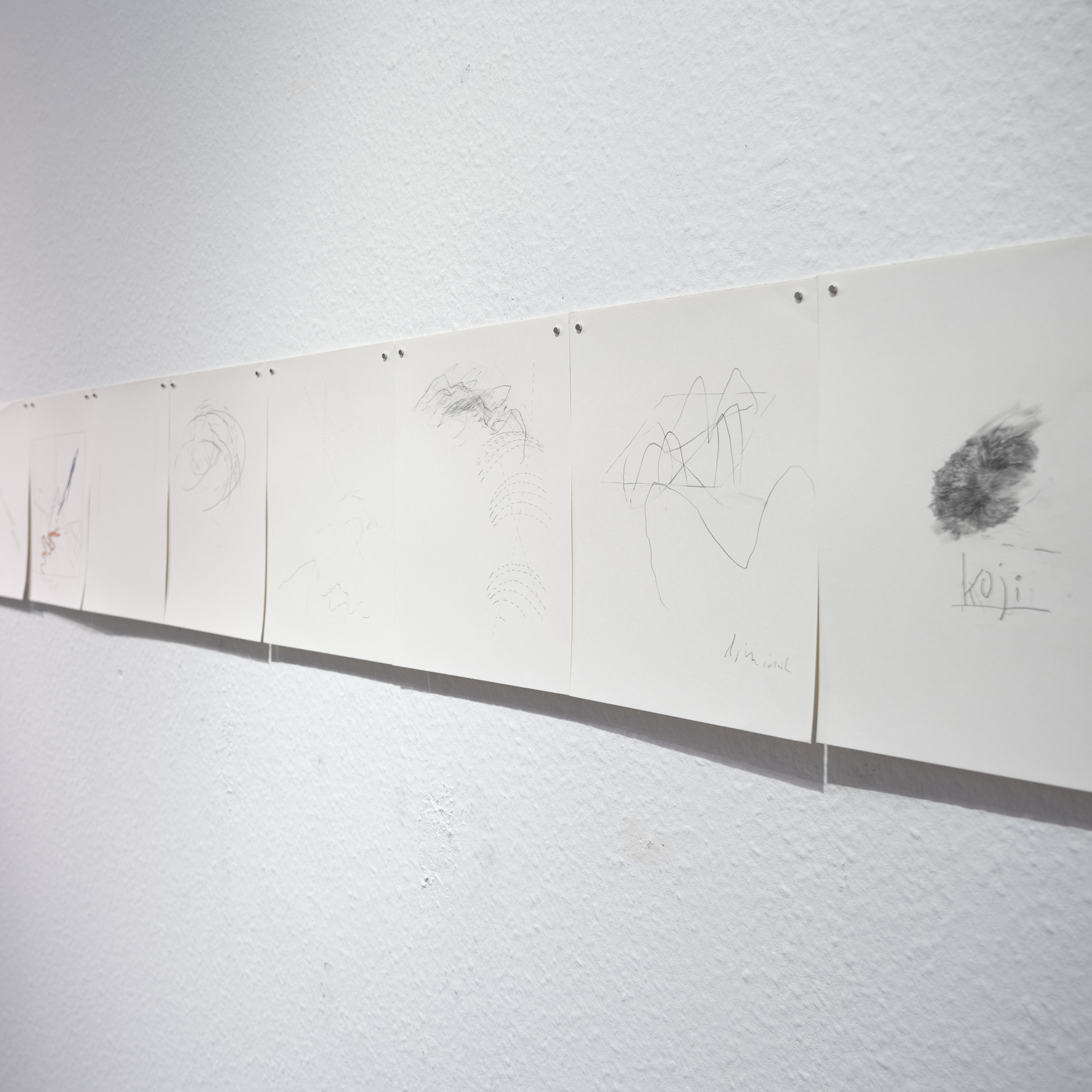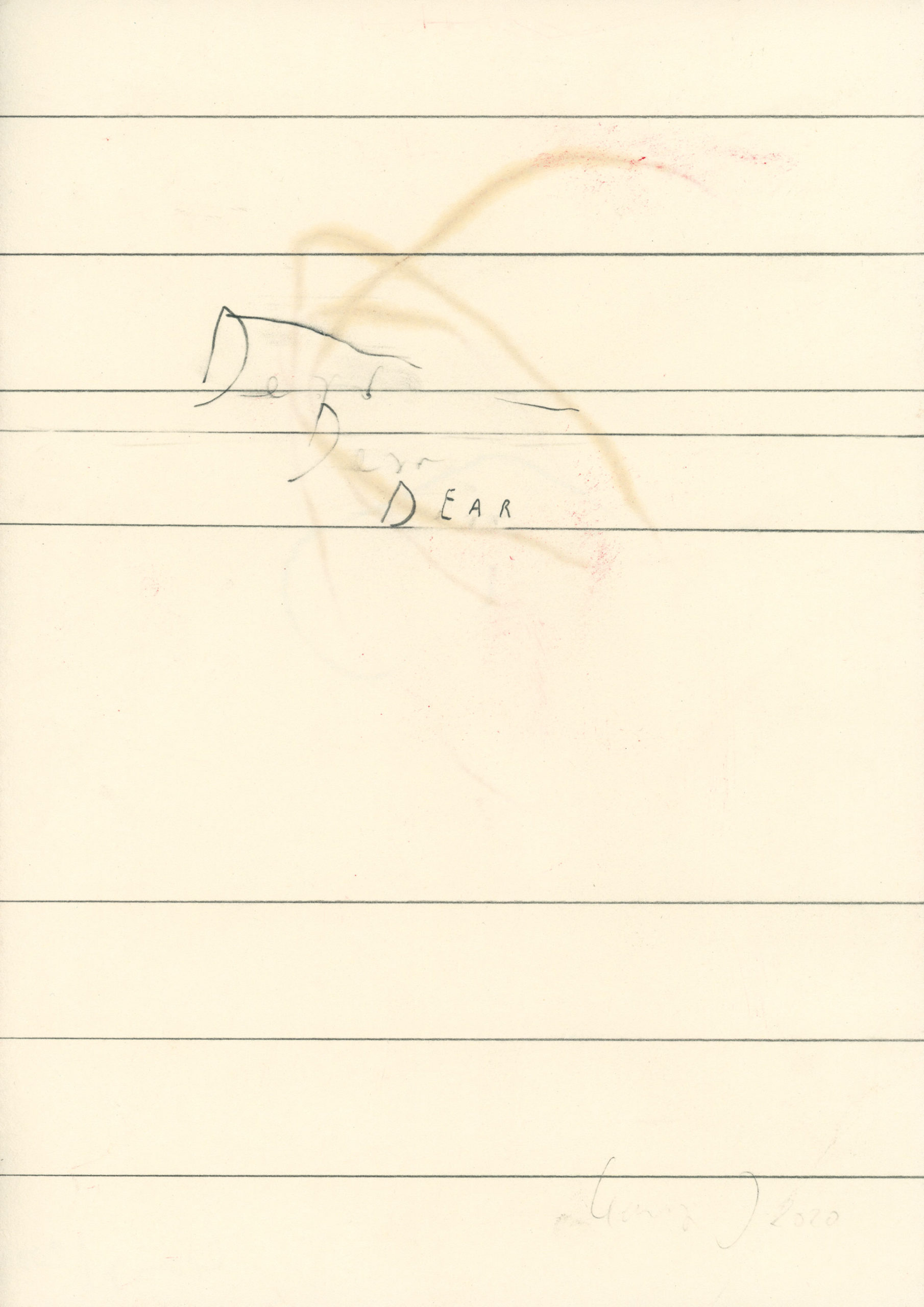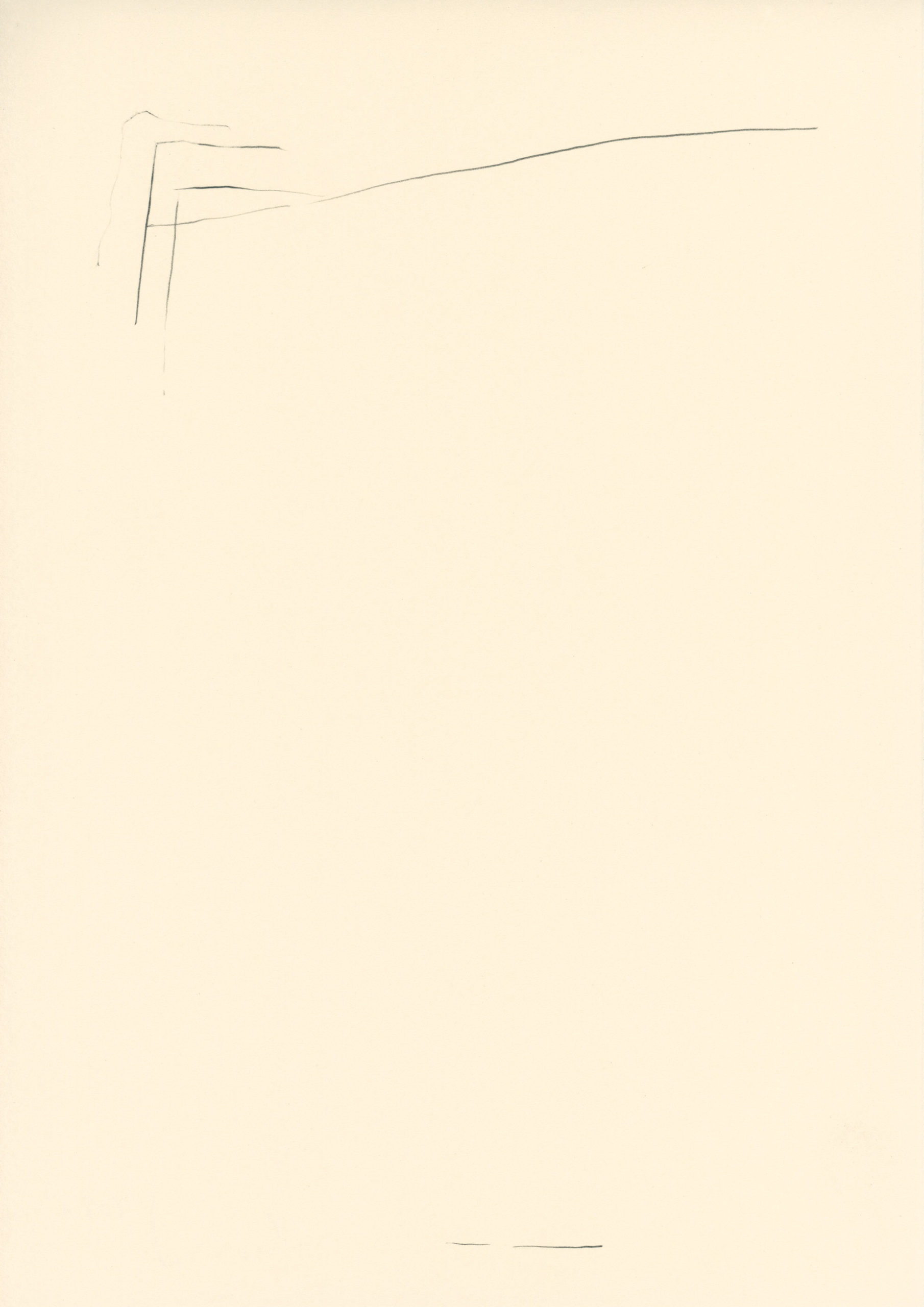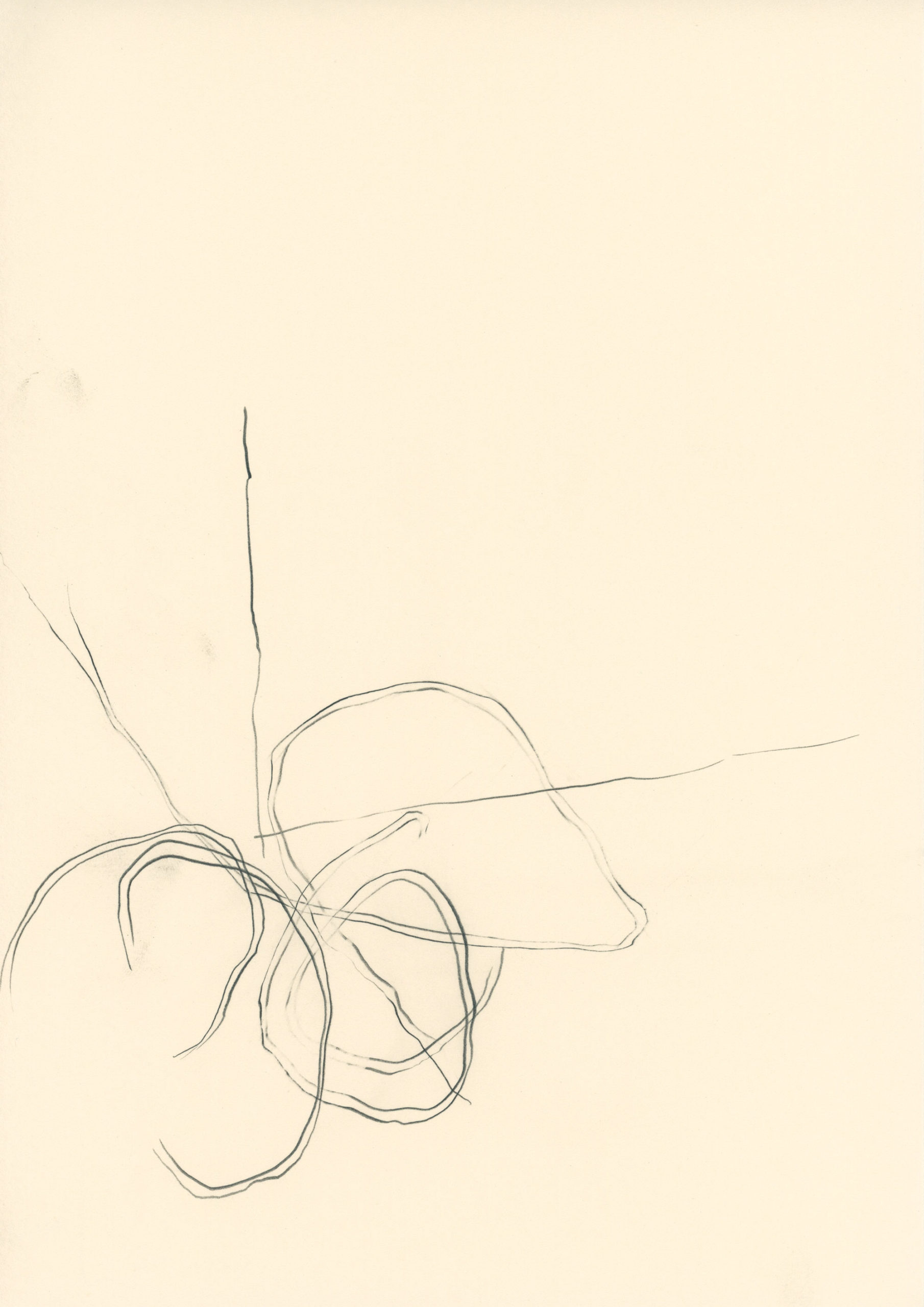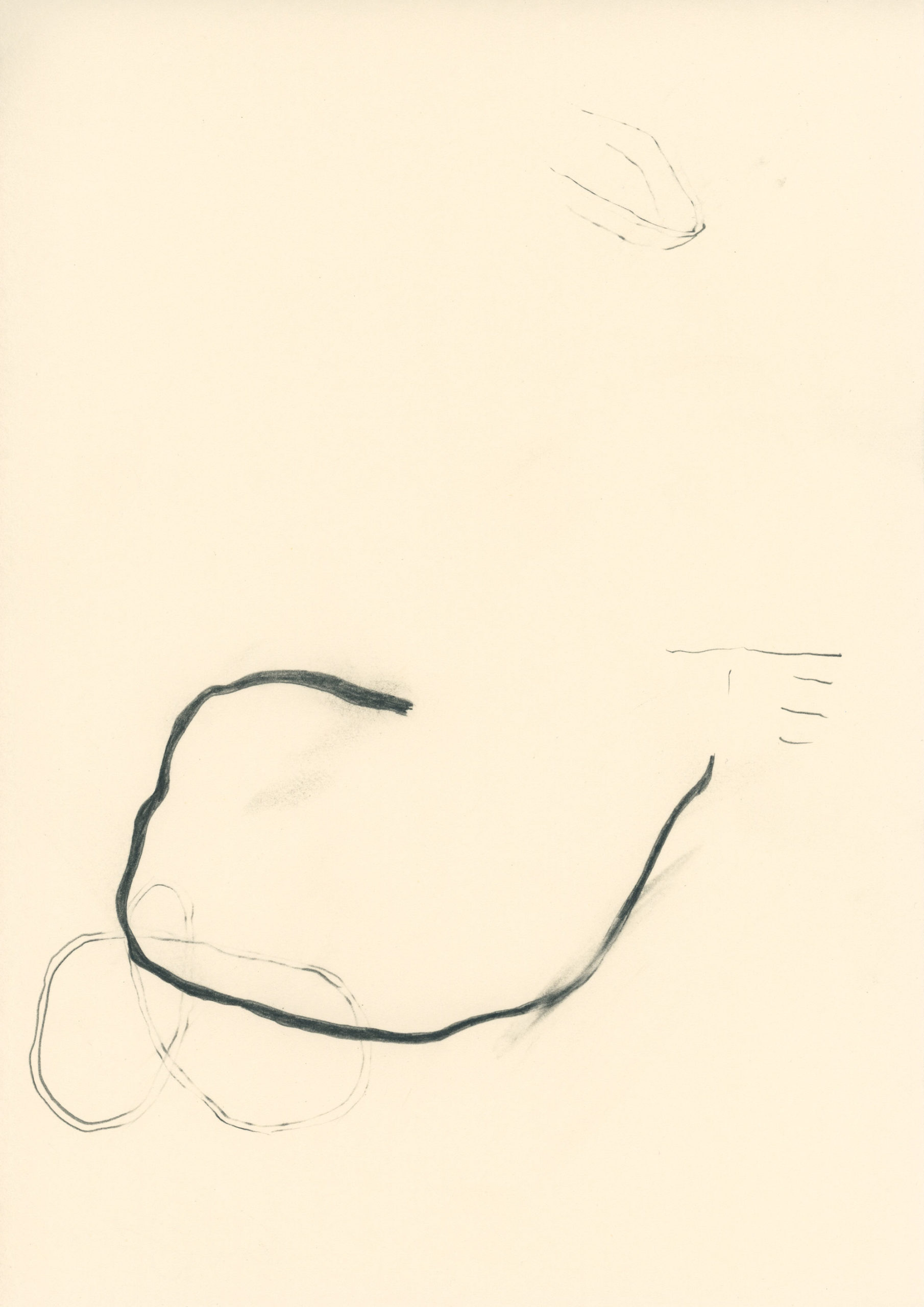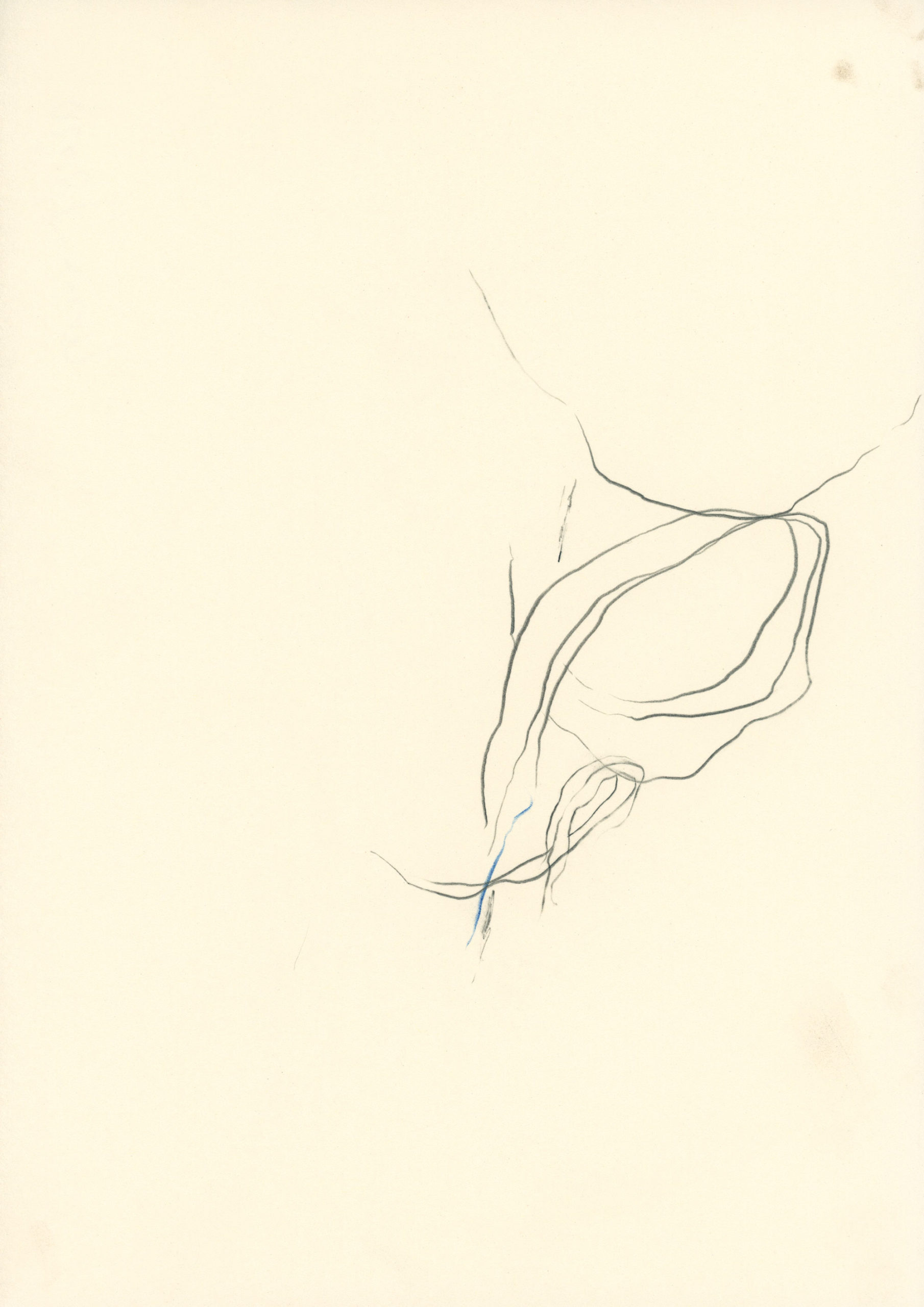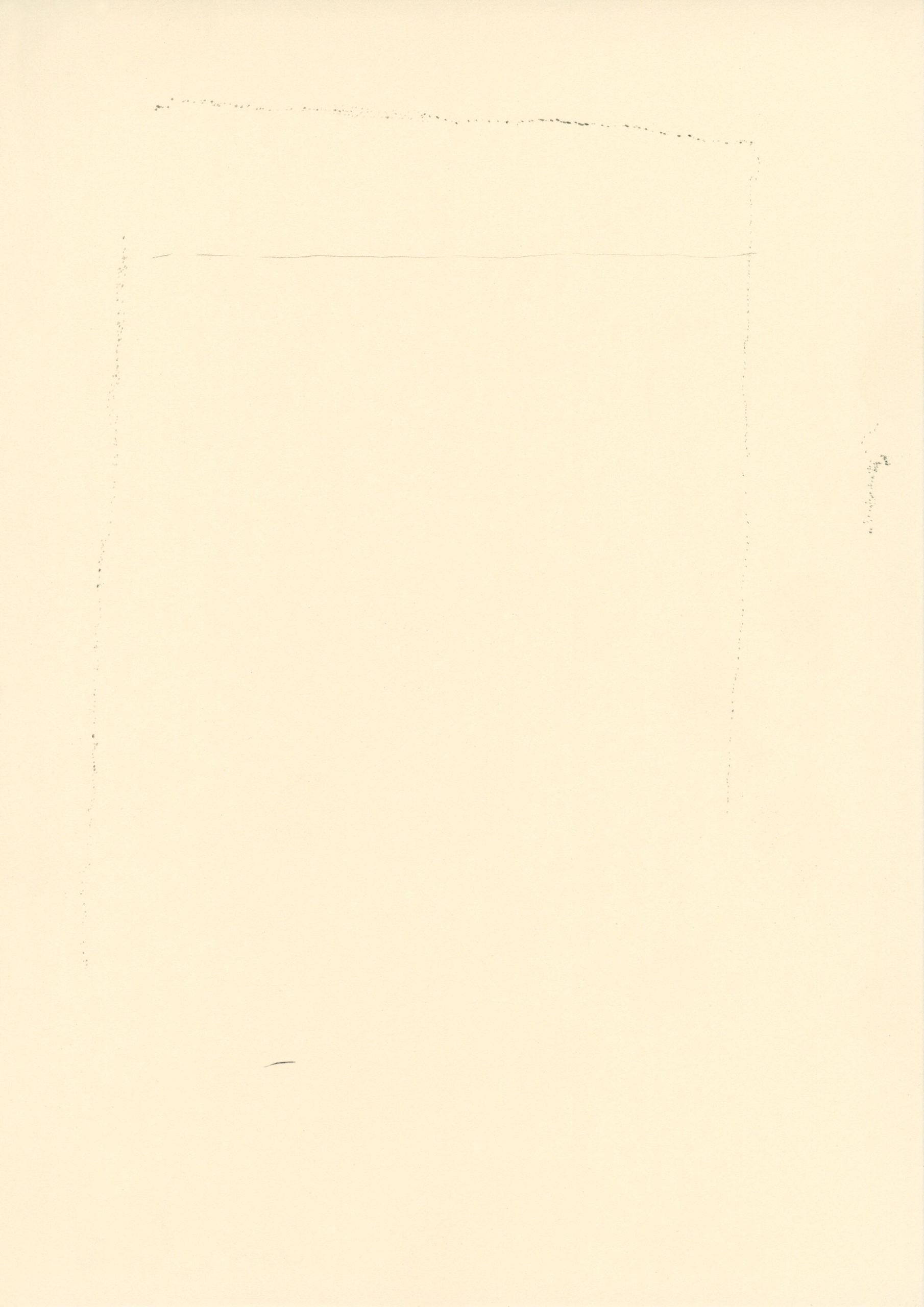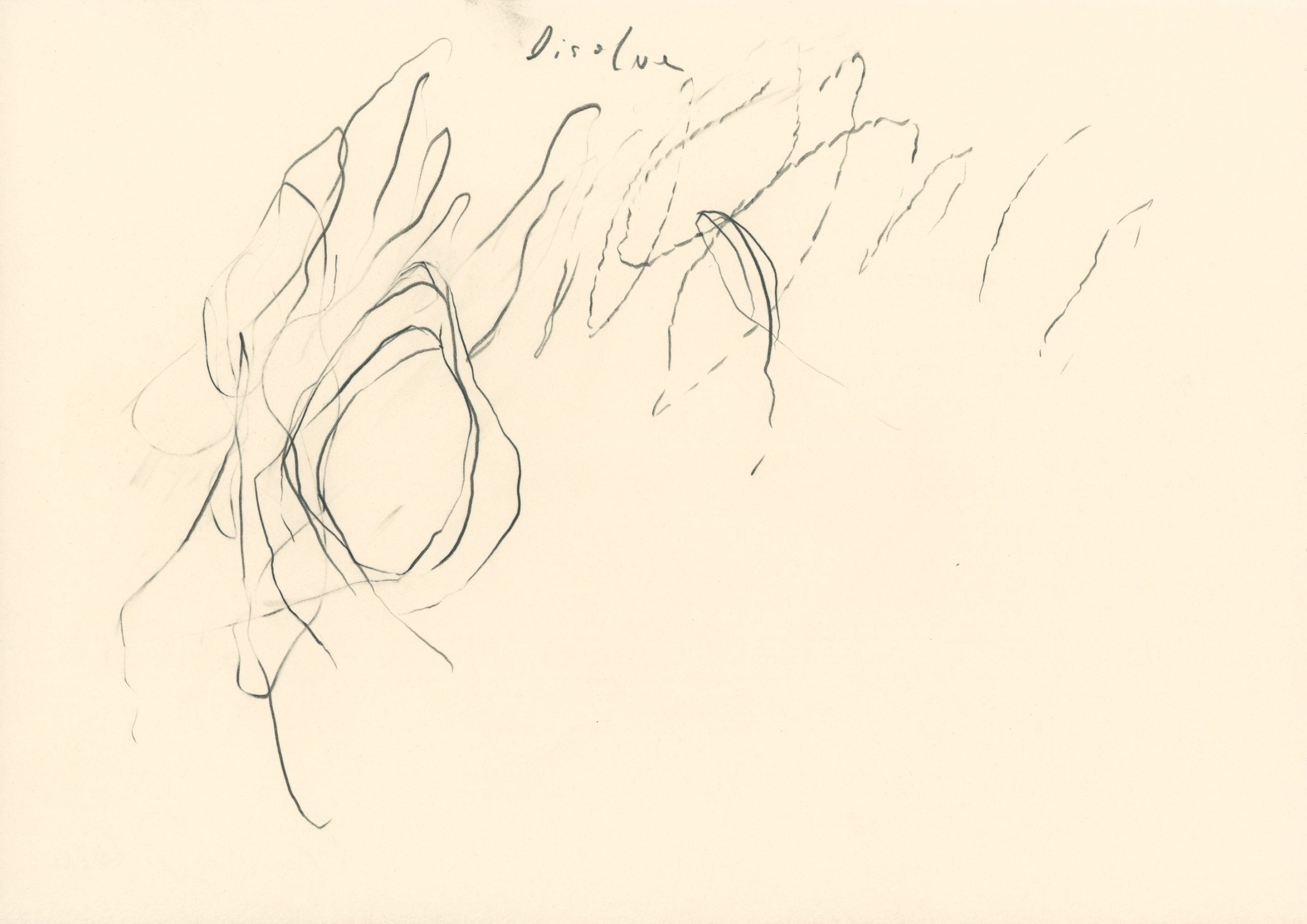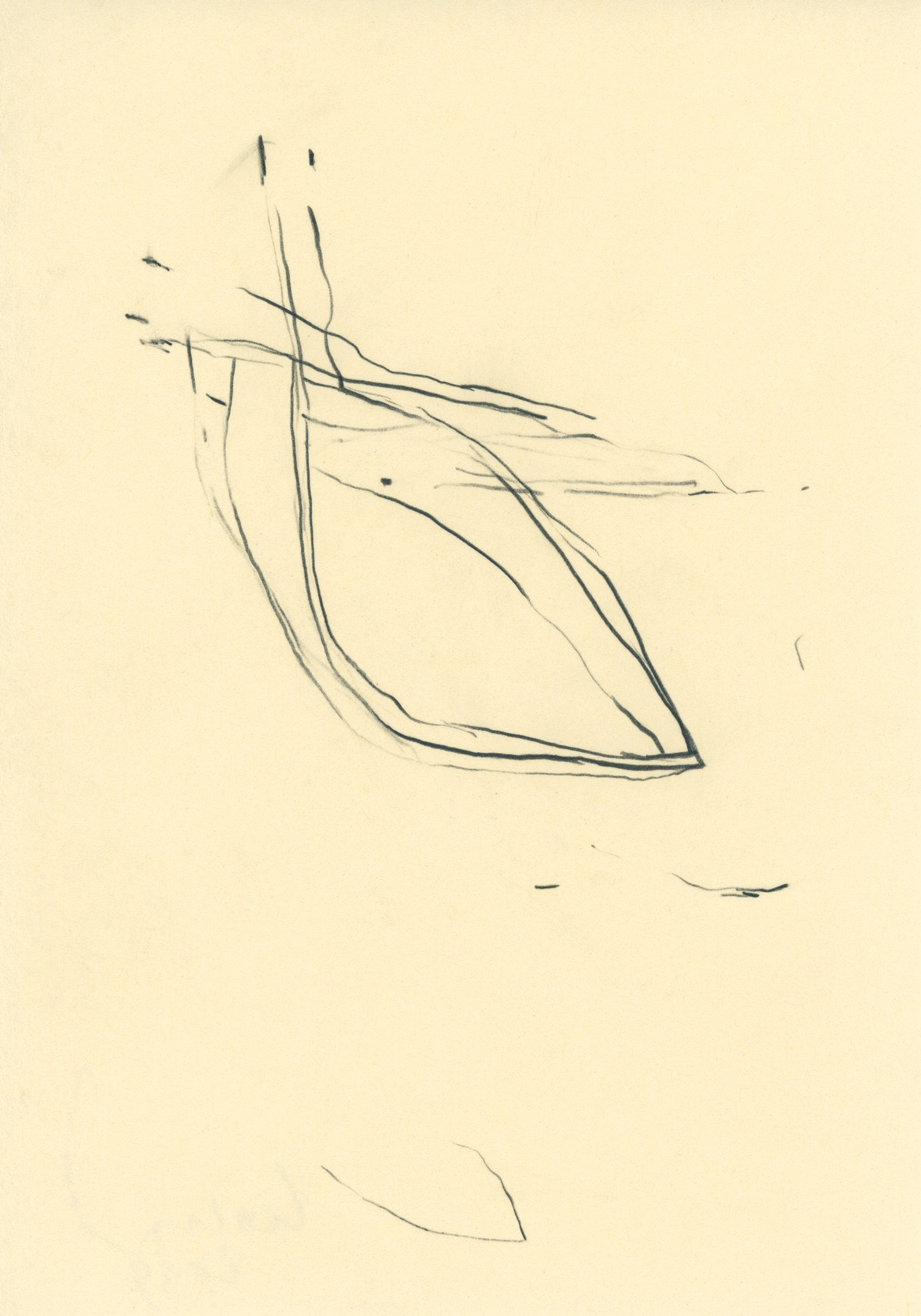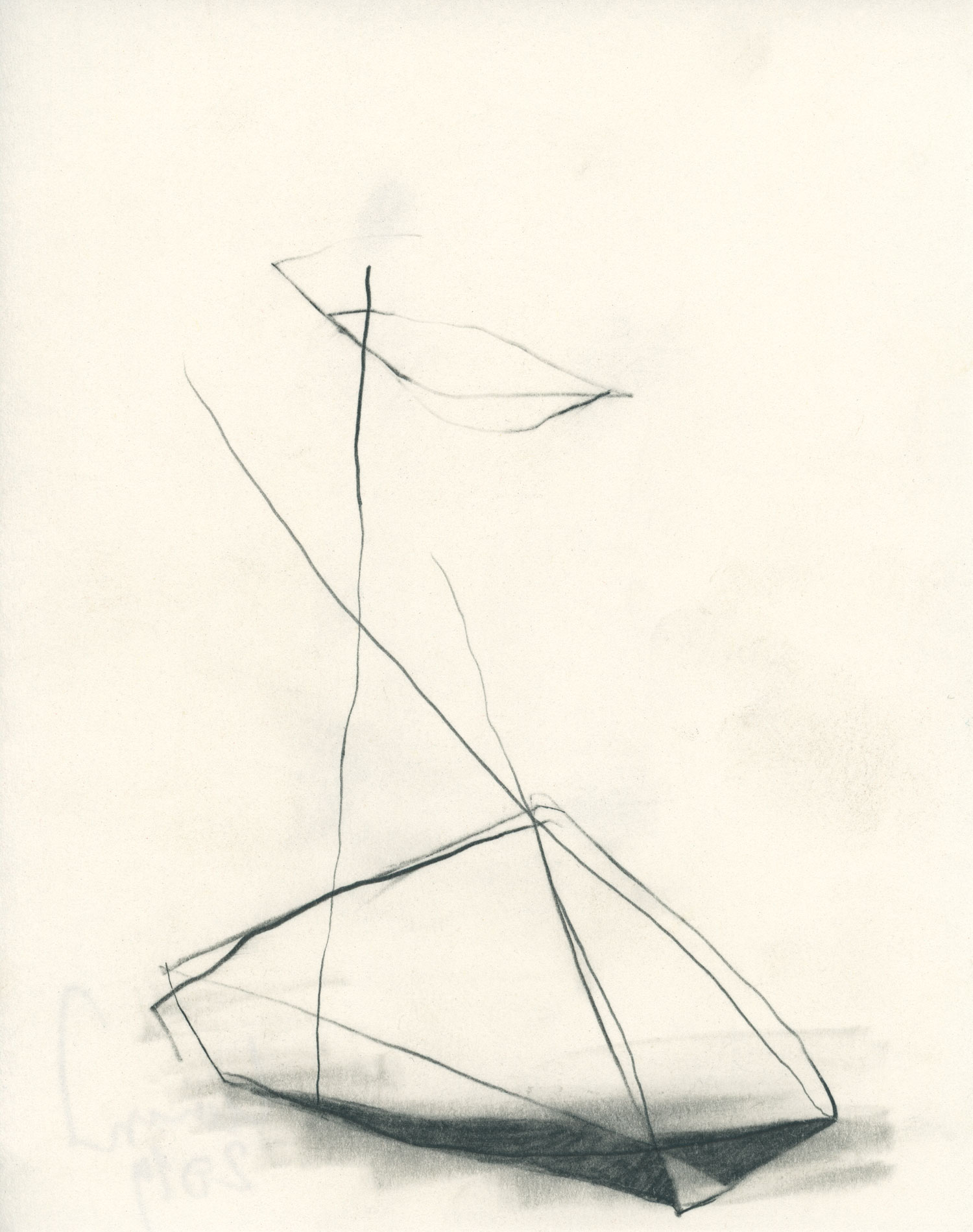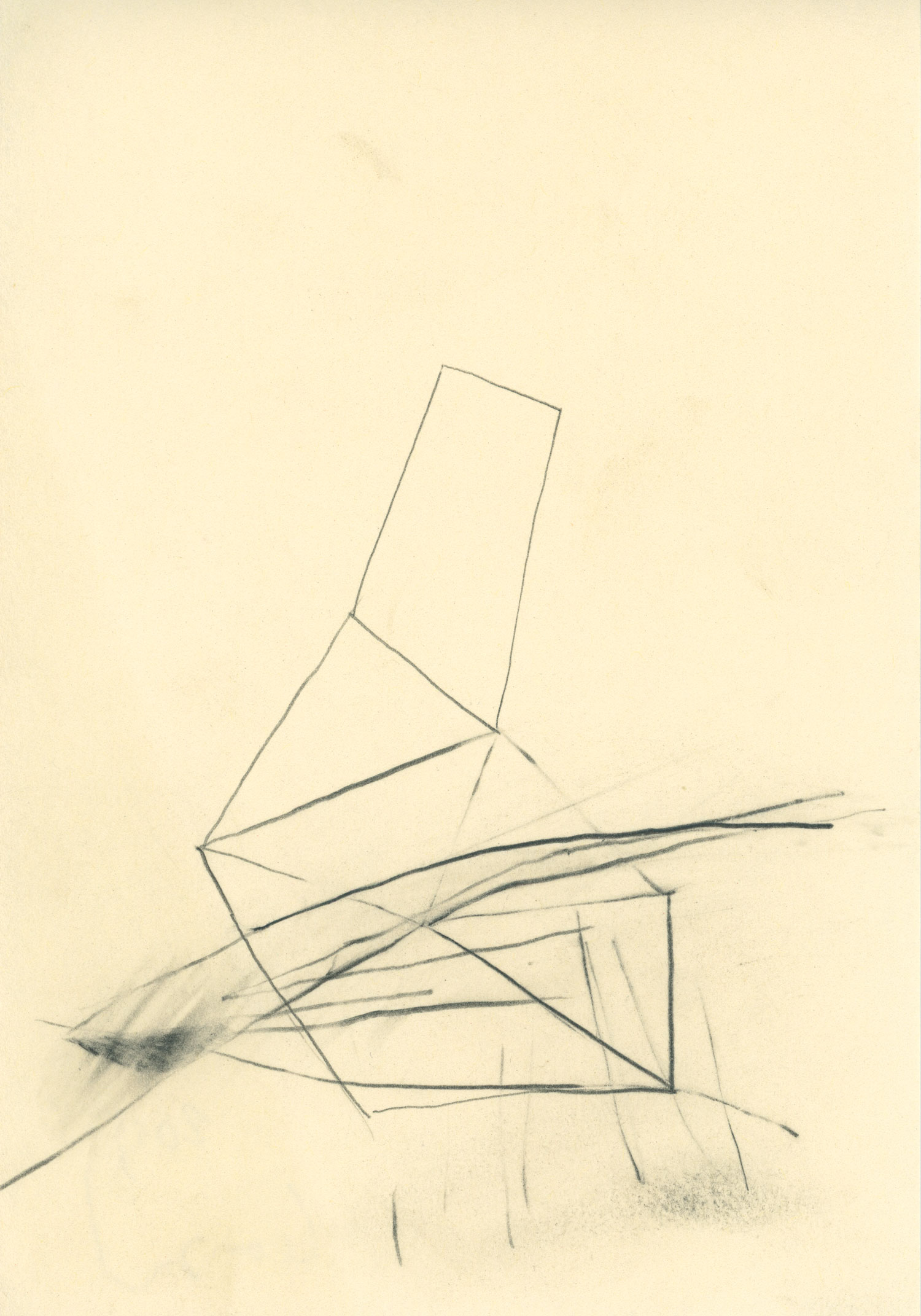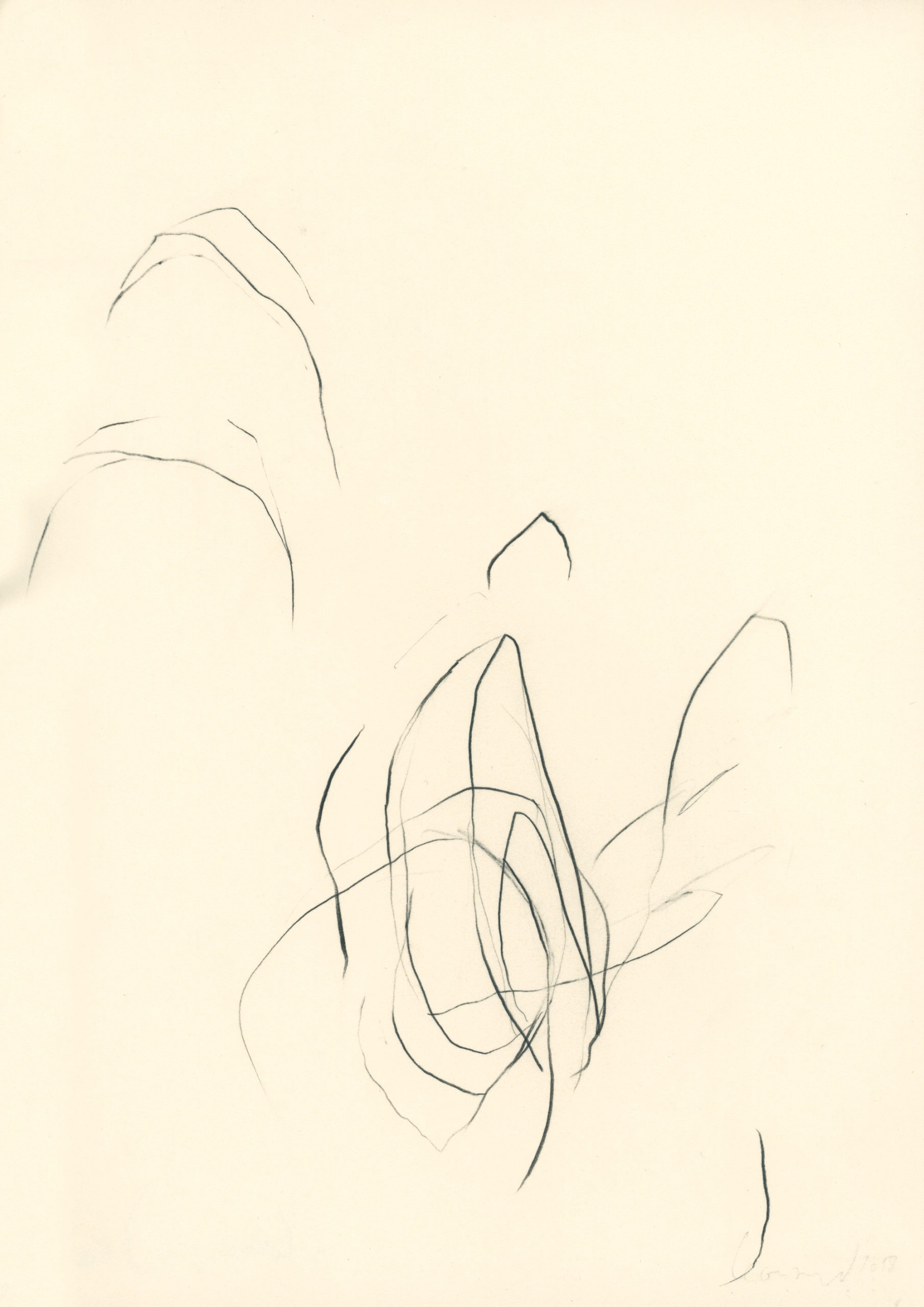pencil on paper
various sizes
2018 – 2022
Pause (essay excerpt)
by Stephane Leonard
A pause is not just a figurative blank space, a void between
two or more events. A pause describes a state of transition, a
moment of holding, the fading from one scene to the next.
A pause usually manifests itself before or after an event or
activity. It unites both states, the before and the after. The
ethnologist Victor Turner came up with the term liminality,
a threshold state in which individuals or entire groups can
find themselves after they have ritually detached from
the prevailing social order. People and the societies they
create are in constant flux. The liminal phase refers to the in
between, and according to Turner, possessing neither the
characteristics of its previous state nor those of the future.
One of these liminal phases is perhaps puberty, although it
is here that one can clearly see that the before–childhood
– and the after–adulthood – are mixed in a chaotic way.
Everything seems to take place at the same time.
The pause is not only the nothingness, it is also everything
at the same time.
Meditation – a self-imposed physical and psychological
pause – is about synchronizing everything inside the body,
adjusting the vibrations, and creating harmony. Not to shut
the world out, but purposefully letting it in and through,
bringing Qi into balance.
Drawing is my kind of meditation. For a moment it
withdraws me from the world and creates an environment
in which the lines become the echo of a now distant reality
of life. Small traces of my existence, notes of self-imposed
inactivity. Alice Lagaay goes even further, describing
pausing, or waiting or doing nothing, as “a way of practicing
being dead or dying as a positive thing, because it teaches
you or gives you the experience of what it is like not to be
necessarily actively involved, not having to always give an
impulse.“



